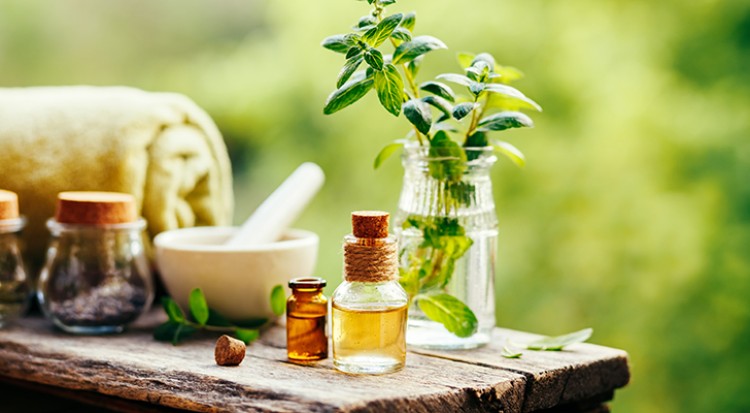
The essential oil that you choose will depend on the purpose—do you want it to help elevate your mood or do you need something to treat a burn? There is no definitive list that specifies which essential oil is used to treat which health condition. For example, while the essential oils of lavender, chamomile, basil, Frankincense, are generally found to have a calming effect and may help with anxiety and bergamot and peppermint oil are stimulating and can help those with depression, this is somewhat individual. So you need to be proactive about doing research and talking with qualified aromatherapists or other individuals with training in using essential oils.
Essential oils enter the body primarily in three ways—applied to the skin, inhaled, or ingested. Within each of these, there are many different kinds of application methods. For example, you can apply essential oils topically using compresses, sprays, baths, or massaging them into the skin.
The application method chosen depends on the desired effect and the essential oil selected. For example, some essential oils are irritating to the skin because of their chemistry. These would need more dilution or might better be used by inhalation.
Essential oils can be applied to the skin using a variety of techniques. It is important to note that most essential oils cannot be applied directly to the skin without being diluted.
Preparing a solution
Note: If you use water as a carrier, be sure to shake or mix your solution well before application.
Common carrier oils are often available in natural foods stores or stores that specialize in natural bath and body products. Organic and cold-pressed carrier oils are preferred, and examples include sweet almond oil, apricot kernel oil, grapeseed oil, jojoba oil, or avocado oil. These oils do not have a strong smell of their own. They should be kept refrigerated until used and should be discarded if they smell rancid. (Oils typically keep about a year if refrigerated.)
For wound care, an ideal essential oil would be gentle to the skin and antimicrobial. Some essential oils can be used in different ways. For example, true lavender essential oil (Lavandula angustifolia) can be used on the skin for cuts and minor burns, and it can be inhaled to promote relaxation and sleep. Lavender is one of the few essential oils that can be used undiluted on small areas of the skin.
What are the techniques?
Compress
The essential oil is diluted in a liquid carrier (water or oil) and applied to a dressing or directly to the affected area. Optional heat or cold can be applied.Gargle
Drops of essential oil are added to water. You mix, then gargle the solution and spit it out. Do NOT swallow it. For example, one drop of tea tree oil in a glass of water can be gargled for sore throat discomfort.Bath
Drops of essential oils are added to bath water in a dispersant immediately before stepping in. This method results in absorption through the skin, as well as inhalation of the volatilized essential oil. A few tablespoons of full cream milk can be used as a dispersant.Massage
Drops of essential oil are added to a natural carrier oil and applied to skin areas with gentle rubbing. As noted earlier, massage blends should not exceed 1% concentration of essential oils (one drop in a teaspoon) for adults. For children, concentration should not exceed 0.25% for infants, 0.5% for toddlers age 6 months to 2 years, and 1% for children 2 years and older. The choice of essential oils for massage depends on the desired effect.
|

|
Currently, there are no comment.
Login to comment